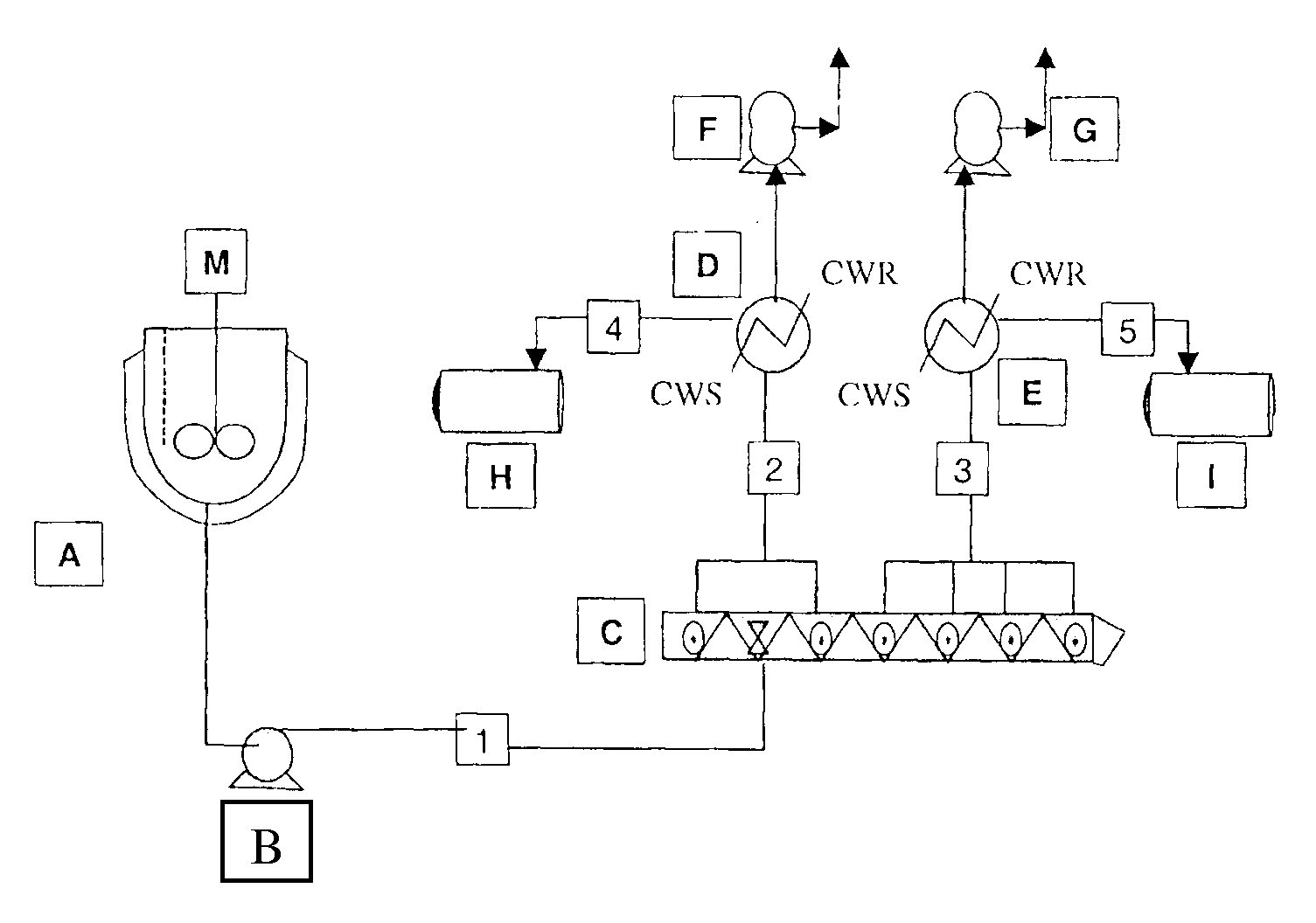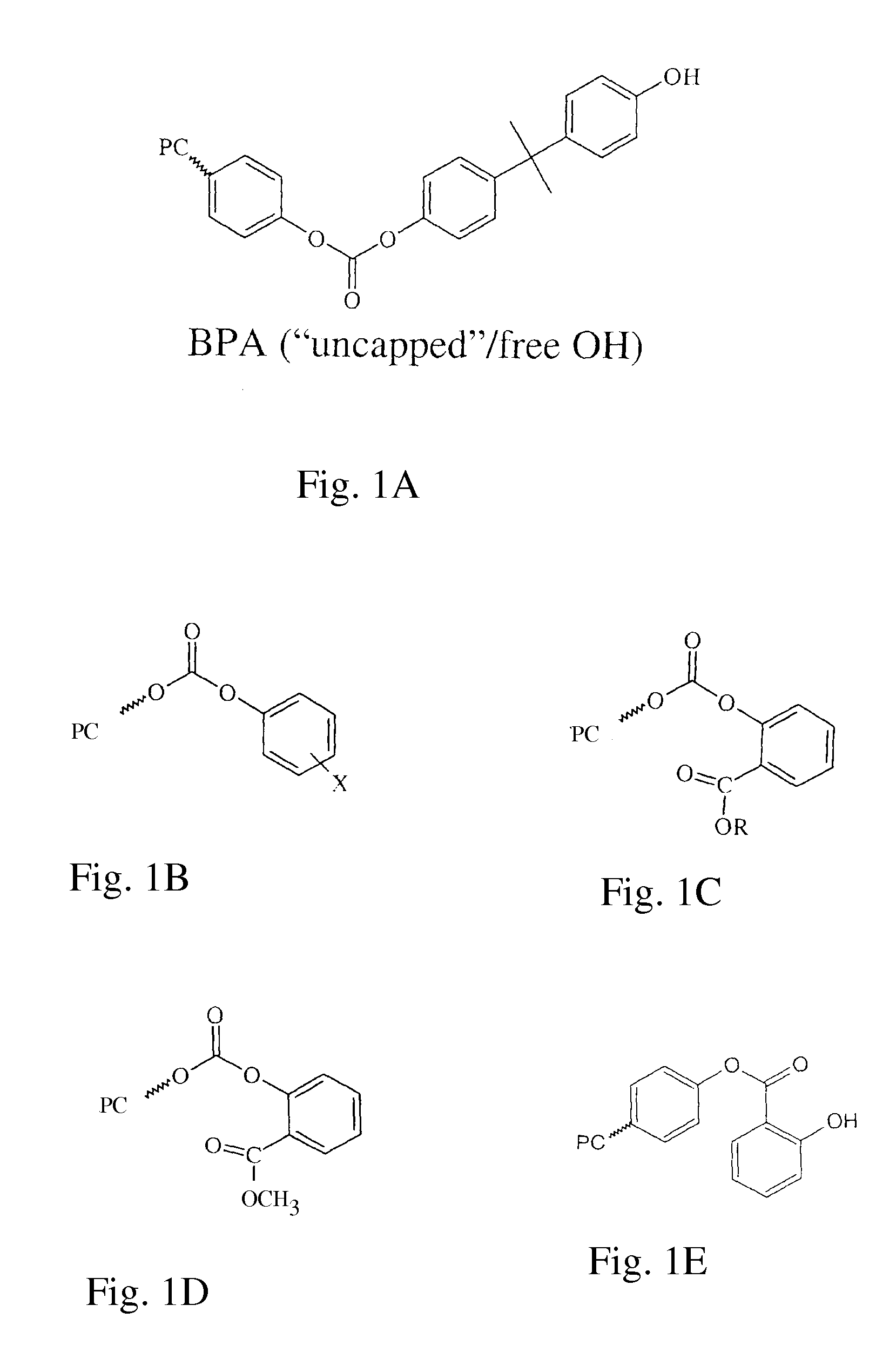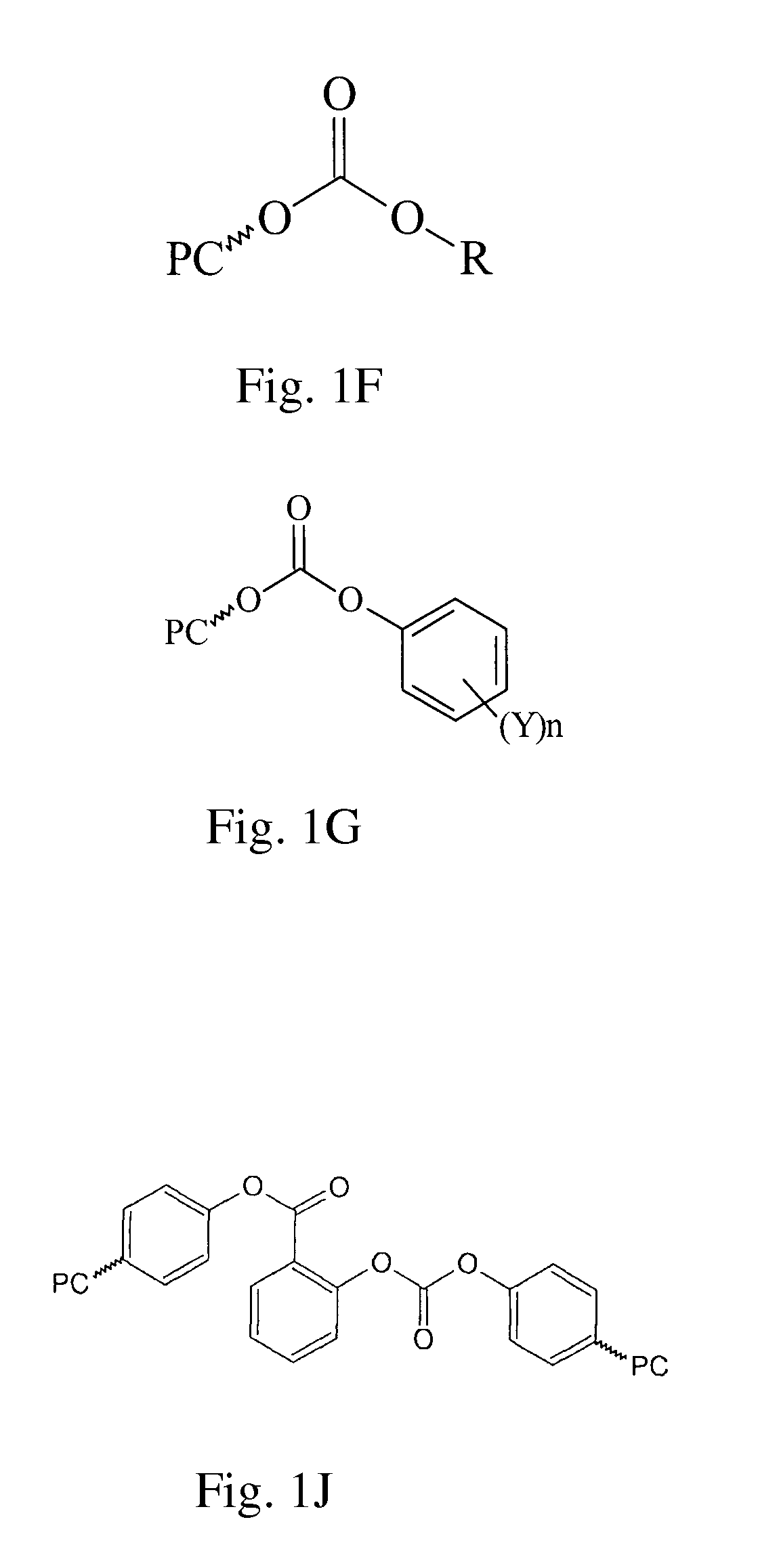Polycarbonates and method of preparing same
a technology of polycarbonates and end groups, which is applied in the field of polycarbonates, can solve the problems of unfavorable color, hydrolytic stability and thermal stability, and polycarbonates incorporating terminal carbonate groups derived from ester-substituted activated carbonates, and achieve the effect of reducing the number of activated carbonate end groups and unfavorable properties
- Summary
- Abstract
- Description
- Claims
- Application Information
AI Technical Summary
Benefits of technology
Problems solved by technology
Method used
Image
Examples
example 1
[0098]Polymerizations were carried out in the reactor system shown schematically in FIG. 5. In this system the oligomerization vessel A is charged at ambient temperature and pressure with solid dihydroxy compound monomers, bisphenol A, and optionally also hydroquinone, and methyl hydroquinone (terpolymers); solid BMSC. The mol % of monomers in the terpolymers was 33% BPA, 34% hydroquinone, and 33% methyl hydroquinone. The catalysts tetramethyl ammonium hydroxide and sodium hydroxide were next added as an aqueous solution—The tetramethyl ammonium hydroxide at a concentration of 25 μEq / mol diol and the sodium hydroxide at a concentration of 4 μEq / mol BPA in the case of homopolymer and 2 μEq / mol BPA in the case of terpolymer. After this the oligomerization reactor was sealed shut. The system was deoxygenated by briefly evacuating the oligomerization reactor and then introducing nitrogen. This deoxegenation process was repeated three times. The oligomerization reactor was then heated to...
example 2
[0107]For scale-up to commercial quantities, continuous manufacturing processes are desirable. Due to the high sensitivity of the monomers molar ratio in the polymer molecular weight, one of the big challenges when scaling up to a continuous process using activated diaryl carbonates deals with a fine adjustment of the monomer flows. Achieving high precision and accuracy in the monomer dosing can involve both very specific instrumentation and high process control capability, which add to the cost of the manufacturing facility and process.
[0108]In tests of the reverse ratio method of the present invention using a continuous process, it has been observed that when the carbonate to diols molar ratio is below one, the polymer molecular weight is significantly more stable. In addition, when operating at molar ratios lower than 1 in a continuous process, the amount of residuals such as methyl salicylate and the amount of branching Fries decrease significantly as compared to process when th...
example 3
[0113]Copolymer was prepared in a continuous process as described above using 70 mol % BPA / 30 mol % HQ monomers and a ratio less than 1 in accordance with the present invention. A PCP chain stopper was chain stopper was added to the reaction mixture in an amount equaling 1 wt %. The polymer was processed in the extruder at 125 rpm. This low rpm (compared to a conventional rpm of 300) is possible because of the low level of MS obtained when running reverse ratio in continuous mode requires less energy input to the extruder to remove residual methyl salicylate. This reduction in the energy input in the extruder results simultaneously in less color and residuals levels within specification. A polymer having a YI value of about 1.4 was obtained with residual methyl salicylate of about 240 ppm, with an end cap value of 55.6%, PCP-End cap=22.1%, TMSC=0.3% (mol), OH=1102 ppm.
[0114]As a comparison copolymer was prepared in a continuous process as described above using 70 mol % BPA / 30 mol % ...
PUM
| Property | Measurement | Unit |
|---|---|---|
| Fraction | aaaaa | aaaaa |
| Fraction | aaaaa | aaaaa |
| Molar mass | aaaaa | aaaaa |
Abstract
Description
Claims
Application Information
 Login to View More
Login to View More - R&D
- Intellectual Property
- Life Sciences
- Materials
- Tech Scout
- Unparalleled Data Quality
- Higher Quality Content
- 60% Fewer Hallucinations
Browse by: Latest US Patents, China's latest patents, Technical Efficacy Thesaurus, Application Domain, Technology Topic, Popular Technical Reports.
© 2025 PatSnap. All rights reserved.Legal|Privacy policy|Modern Slavery Act Transparency Statement|Sitemap|About US| Contact US: help@patsnap.com



